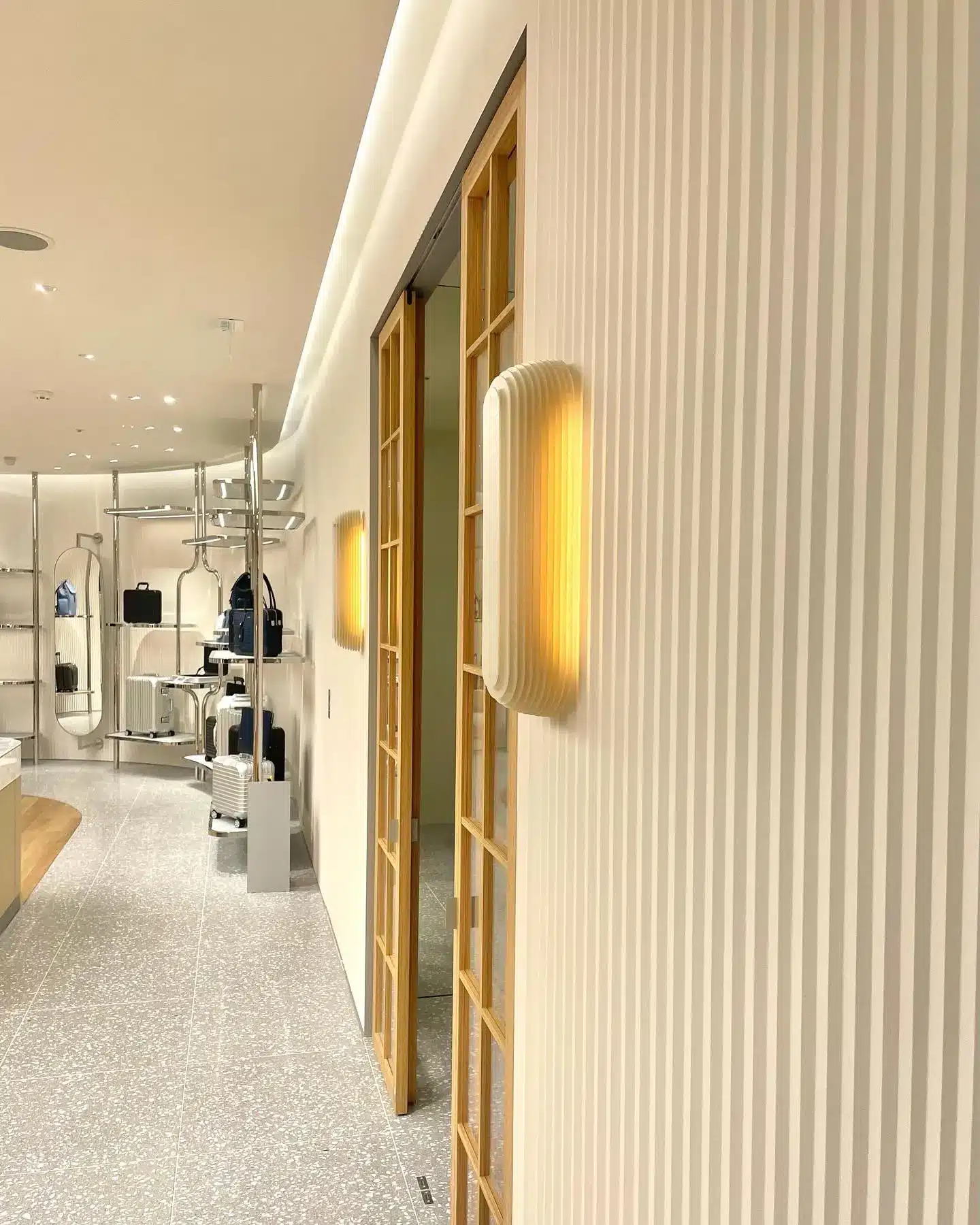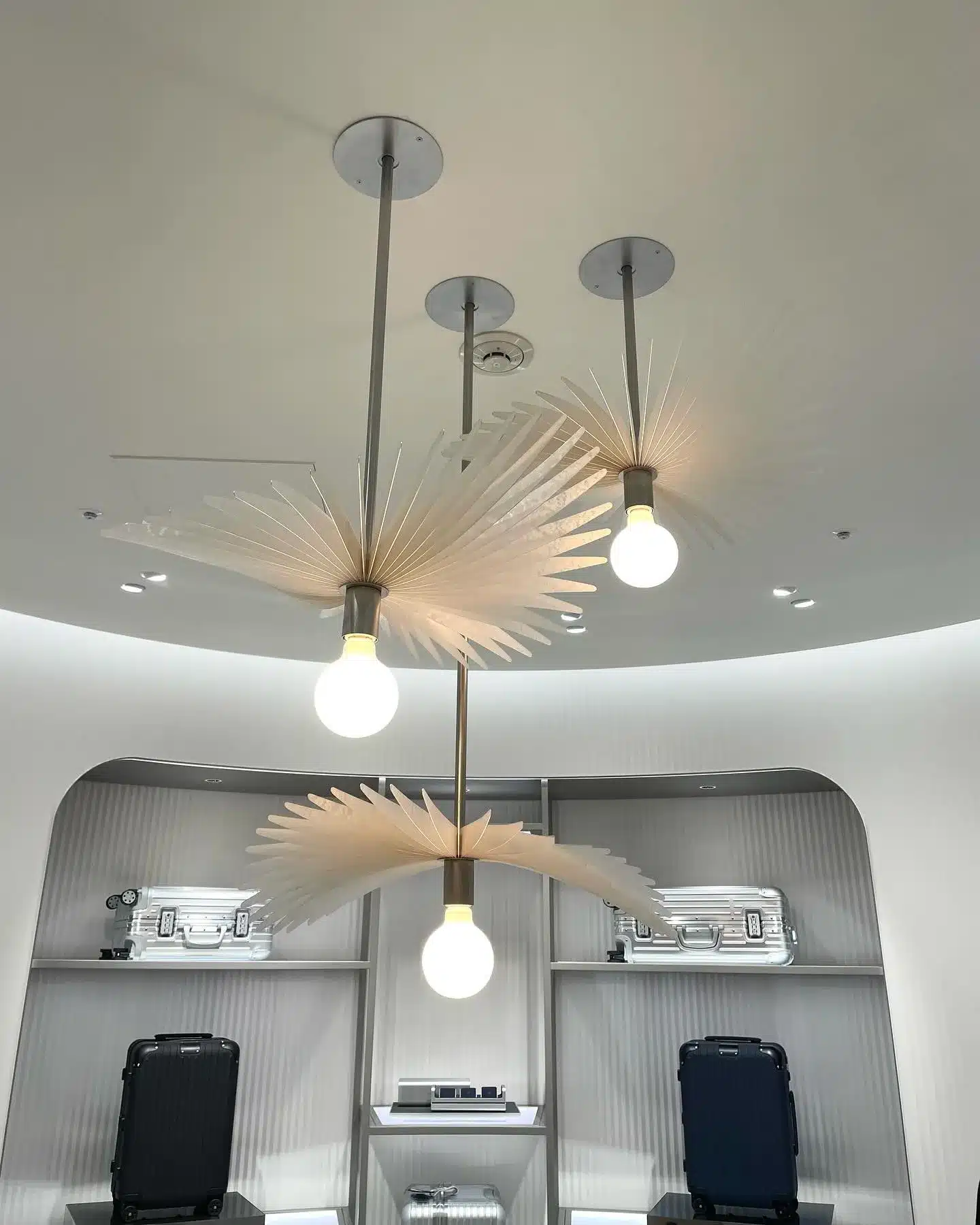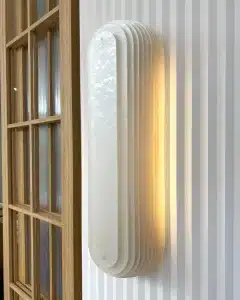
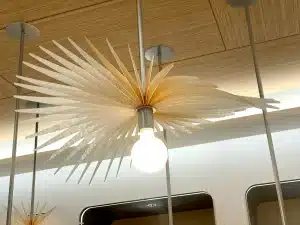
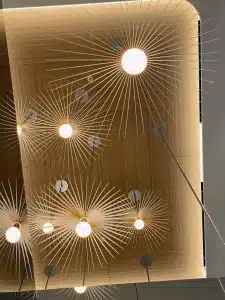
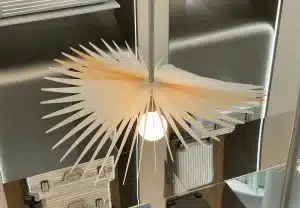
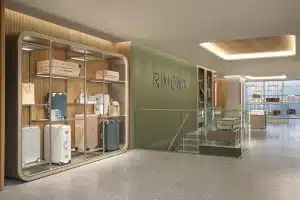
Direction/ A Factory Inc
3D Modeling & Digital Fabrication/ TERADA 3D WORKS
Technical Cooperation/ President of Izumi Kashihishi Hozonkai, Kunihiko Hirano
– Creation of Original Lighting for RIMOWA Omotesando Store –
At REQU, our primary focus is on creating design paper, especially breathing washi, a material with humidity adjustment and air purification effects. We design patterns with traditional Japanese papermaking techniques using a paper fan and handcraft these design papers. In recent years, equipped with digital fabrication tools, we have presented various works, particularly emphasizing three-dimensional washi art.
While respecting the traditional methods of making Japanese paper, we aimed to express the concepts inherent in the material “washi,” such as the aesthetic consciousness shared by the Japanese people and an understanding of delicate and transient elements, using modern techniques.
The fact that traditional craft like washi is still produced by artisans and used by people today is a testament to the evolution and updating of traditional methods as new technologies and tools are developed in the process of washi production.
In the 125-year history of RIMOWA, they have maintained the essence while continuously reforming, becoming a beloved brand worldwide. This resonates with the hopes of those involved in craftsmanship.
We view digital fabrication as a new tool of civilization. We aim to unleash our creativity without restrictions, crossing the boundaries of various materials and technologies, and expanding the scope of expression in handicrafts.
When considering how to use washi paper to create a delicate expression that evokes a Japanese atmosphere, we thought that a major challenge would be finding the balance between strength and impermanence, which are crucial for long-term store use.
Both “Petal Snow” and “Hazy Moon” are expressions of natural phenomena that evoke a sense of delicacy and transparency, so the relationship with light is important. We decided on acrylic boards as the base material for the washi paper, as they need to be able to retain their strength while allowing light to pass through, be resistant to heat and humidity, and also allow us to freely consider the design of the shape in the Digital Tough Fabrication Lab in our workshop.
Our portfolio and design proposals submitted to the top architect in Paris were highly praised, leading to the design and production of the lighting. When discussing the completed lighting on-site, the architect described it as “very beautiful,” allowing us to be deeply involved in the world of fashion again and contribute to shaping the brand’s atmosphere.
**Flower Petal Snow (花弁雪):**
Inspired by the scene of large snowflakes falling like flower petals, the lighting in the store’s high ceiling portrays the moments of petals glistening in the sunlight and descending. The shape of the parts resembling flower petals takes inspiration from the continuous straight lines of RIMOWA’s iconic suitcases, creating a parametric design that gently undulates, avoiding a too-rigid appearance. The washi fibers allow light to pass through, creating a shimmering effect in pure white and silver tones.
The shades on the second floor are unified in white and silver, evoking the pure white snowflakes of Flower Petal Snow.
**Hazy Moon (朧月):**
Drawing from the simplicity and beauty of patterns drawn with a ruler or compass, the bracket lighting adopts a simple elliptical shape with a continuous pattern reminiscent of Art Deco. The design represents the “faintly hazy moon” seen through misty clouds, capturing the moonlight’s gentle glow. The washi fibers create a layered effect, resembling clouds, vapor, and the moon’s glow, resulting in a unique visual from any angle.
The washi plates, donned in silver and pearl white, create a rare visual spectacle when layered about twenty times, regardless of the viewing angle.


